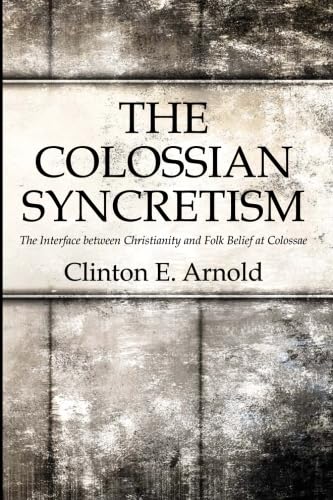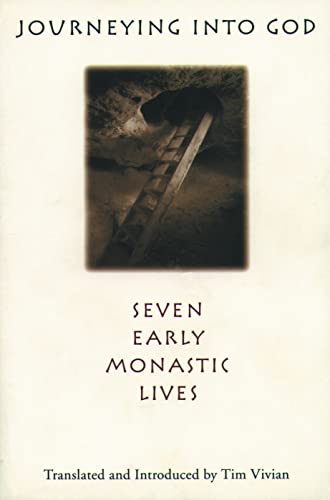The Colossian Syncretism: The Interface between Christianity and Folk Belief at Colossae
Written by Clinton E. Arnold Reviewed By Peter T. O’BrienIn this stimulating work, Dr. Clint Arnold (the author of an earlier ground-breaking book, Ephesians-Power and Magic, 1989), has reassessed the nature of ‘heresy’ at Colossae which Paul opposed so strongly in his letter to the church there. Drawing upon archaeological evidence from Asia Minor, including little-known ‘angel’ inscriptions and magical texts and, but a careful re-examination of Paul’s letter, Dr Arnold shows that ‘the Colossians tried to combine the apostle’s teaching about Christ with local pagan and Jewish folk beliefs’. As a result they were ‘blind to the liberating power of the indwelling Christ, the supreme Creator and Lord of all spiritual principalities and powers’.
For more than a century New Testament scholarship has recognized some mixture of pagan and Jewish religious ideas lying behind the self-styled ‘philosophy’ at Colossae, but the nature and extent of the syncretism has been disputed. First, a Gnostic interpretation of this philosophy was thought to be the key, the pagan mystery cults, and more recently Jewish mysticism (that involved a visionary ascent to heaven for which the initiate prepared by rigorous ascetic practices) has increasingly held sway among scholars. Dr Arnold acknowledges that the Christians at Colossae lived in an environment of religious pluralism and syncretism. His thesis is that the beliefs and practices of the opponents at Colossae were ‘a combination of Phrygian folk belief, local folk Judaism and Christianity, (p. 243). Features include:
- The ‘veneration of angels’ that took place in the context of magic, not only in pagan circles but also within Judaism, where monotheism still prevailed. Angels, as supernatural servants and emissaries of Yahweh, were perceived as accessible supernatural beings who came to the aid of people in need. They had not taken on divine status, nor were there among Jews in Asia Minor ‘angel cults’ (in which angels were worshipped in the same way as Yahweh, with ascriptions of praise and glory). The disputed expression, the ‘worship of angels’, refers to this veneration of angels, and was an appropriate description of calling on angels in magical invocations for help and protection from evil powers in the affairs of daily life
- Initiation into a mystery religion. Dr Arnold’s researchers have reaffirmed the earlier conclusions of Martin Dibelius and Sir William Ramsay that the key term embateuo in the phrase ‘entering the things he had seen’ (2:18) was a technical term for the second stage of a mystery initiation, in which a person was led through a series of ecstatic visionary experiences. Initiates, having passed through a new and victorious life experience, believed they had the knowledge and authority to judge others, while they themselves had been delivered from the powers of darkness.
- The stoicheia, regarded as evil spirits as evil spiritual powers and feared by the adherents of the ‘philosophy’ who perceived them to be operating directly in the daily affairs of life. In a semi-magical way the Colossians invoked angels for protection. For Paul, however the Stoicheia were an integral part of this present evil age. The rules and regulations (cf. 2:21) imposed by them were unnecessary and represent a reversion to a form of slavery under the ‘powers’ themselves. Believers had already been freed from this demonic tyranny through their identification with Christ.
- In this remarkable syncretism at Colossae, folk Judaism made a major contribution, as the references to ‘wisdom’ (from a Solomonic magical tradition), the term ‘philosophy’ itself, sabbath observance, festivals and new moon celebrations, and ‘humility’ show.
In conclusion, the author sets out Paul’s theological response to these syncretistic challenges at Colossae (pp. 246–309), in terms of Christ’s supremacy over and defeat of the powers, and of the significance of Christians participating in his divine fullness. This exposition of Paul’s response is a fine piece.
Dr Arnold’s book is a creative and convincing reassessment of the Colossian heresy. He may have solved the meaning of disputed phrases such as ‘the worship of angels’, ‘things he has seen on entering’ and the stoicheia. At the same time, his work is a helpful corrective to the dominant Jewish mystical interpretation of the last few years that has not satisfactorily accounted for the pagan elements within the syncretism.
Peter T. O’Brien
Moore College, Sydney







